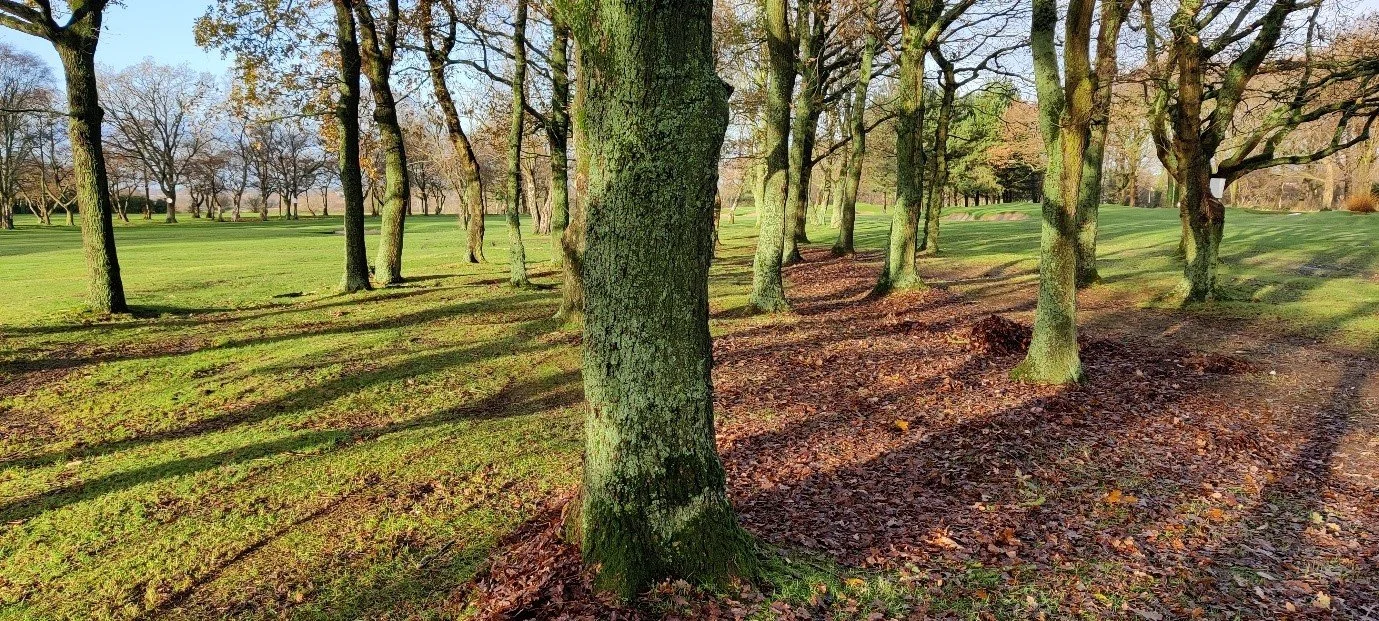Head Green Keepers course update Dec 21
Unfortunately, the month of December has started very wet indeed and has put the course on the back foot. November was relatively dry considering, with 80mm falling in just 9 rain days, and that’s including 40mm in a day at the start of the month. In the first 14 days of December, we have had 96mm with only 2 dry days!
Ground conditions are not very good with the majority of the golf course being wet, and especially soft in places. Therefore, it is difficult to travel around the course and carry out specific tasks, and also it can be quite slippy on banks for staff and golfers too. That is the main reason why certain holes are sometimes closed. It takes away the risk of slipping (although you can slip anywhere) but it also gives those areas the chance to rest and recover.
We don’t like to keep holes closed, however it is sometimes necessary at this time of year to give some or all areas of the course the chance to recover.
Despite the poor weather we were lucky enough to take a demonstration of a great piece of equipment called the Amazone Profihopper.
Figure 1 Profihopper cuts deep rough
This machine is a more up to date version of our existing Amazone machine, but much more versatile. It is a stand alone machine, meaning it doesn’t need a tractor to pull it. It also has a high tip mechanism, so any debris can be tipped straight into a trailer, which is much more efficient.
Figure 2.Before, with leaves all blown into the trees.
Figure 3. After, can drive really close to trees, leaving it tidy
The right hand side of the 5th has also been cut right back with the Profihopper, despite the soft conditions. It performed very well. It can also deep scarify surfaces, removing unwanted thatch. We tried it on the 4th tee.
Figure 4. 5th deep rough cut back
Figure 5. 4th tee scarified
During this wet period the greens are being constantly brushed and any debris removed through blowing. Growth has slowed right down now but they will still be given a trim when needed. Unfortunately, the weather conditions have been conducive to some disease activity, as it has been warm and wet. Some courses in the northwest have been badly hit, despite a very expensive and expansive fungicide programme.
We have greens that have been hit, but others with nothing. We will continue to monitor this activity, and with warmer conditions to follow, we must remain vigilant. The one good thing to come out of disease scars is that you can sow a more favourable grass type into the scar, which is much more resistant to disease and drought, like creeping bent grass.
This week the greens have been given a biological application of good bacteria. This will help fight and repair disease damage, whilst also encouraging better root development. They also were sarel rolled, allowing the greens to breathe. Next week they will receive an application of a seaweed and iron combination to keep them strong, as well as a dew suppressant, which will help to keep the grass leaf dry. This in turn helps to fight against any further disease activity.
All this season we have had some issues with the irrigation system, with the most prominent one being the ineffective controls by the 9th green. These serve the 9th green, 10th and 18th tees. If we were wanting to water the tees in the summer overnight, those two tees never used to get watered by the computer. In the boxes, the controls were that far underground and underwater, that it was very difficult to control and manage the situation. (Is it possible that when the 9th green was reconstructed, the back left corner was built up, but the original irrigation pipework was left lower down?)
Figure 6. Irrigation valves dug out ready for maintenance
Therefore, we have taken the steps to dig out the boxes and down to the irrigation valves, which will be lifted to a more manageable height. The wiring will be tested to make sure that the tees are easier to manage.
We will try and keep the rest of the course as tidy as possible during this wet period, before looking at our winter tasks of carrying out some drainage, which will be described next time.
Finally, on behalf of all the greenkeeping team, I would like to extend our best wishes for Christmas and we look forward to continued improvements on the golf course in the new year.






